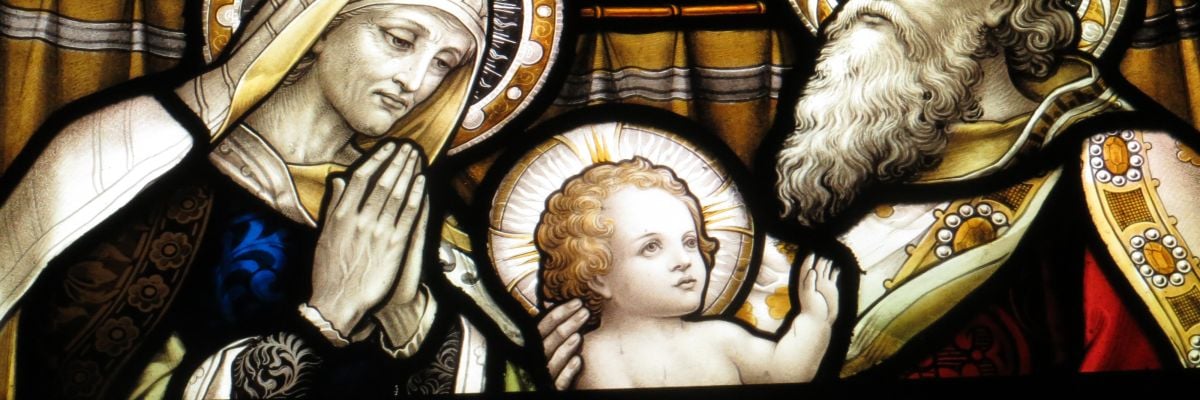
One argument that is often used by mythicists is the claim that other pagan deities were also born miraculously of virgins, making the birth of Jesus nothing new in the history of world religions. As the argument goes; Horus, Osiris, Mithras, Dionysus, Krishna, and others all fit this description. In fact, as it is often claimed, there are also heroes and historical figures like Ion, Romulus, Asclepius, and Alexander the Great who were believed to be the generation of gods and virgin women.
In order to evaluate these comparisons, it is helpful to first understand exactly what Catholics believe about the virginity of Mary and the birth of Jesus.
According to the Gospel accounts, Mary was betrothed to her husband Joseph but they had never been intimate, and while Jesus was conceived of the Holy Spirit, there was no intercourse involved (cf. Mt. 1:23-25, Lk 1:26-38). The Catechism of the Catholic Church explains:
The deepening of faith in the virginal motherhood led the Church to confess Mary’s real and perpetual virginity even in the act of giving birth to the Son of God made man. In fact, Christ’s birth “did not diminish his mother’s virginal integrity but sanctified it.” And so the liturgy of the Church celebrates Mary as Aeiparthenos, the “Ever-virgin” (499).
This is not the case for any of the pagan deities or historical figures mentioned above. Each can be classified in one of three ways:
- The pagan god is not born of a virgin mother.
- The birth of the pagan god is the result of a sexual encounter.
- The parallel exists, but the Christian tradition antedates the pagan mythology.
The pagan god is not born of a virgin mother
Some of the claimed “virgin births” are not births at all; at least not in the normal way a woman delivers a child. A closer investigation into the mythology regarding the birth of many pagan gods will reveal some other miraculous creation that neither involves a virgin woman (This alone is enough to disqualify it as a parallel to the birth of Jesus) or a goddess. In other cases there may not have been sexual intercourse, but the woman or goddess simply was not a virgin before conception.
One example is the Roman god, Mithras. The “virgin birth” claim is often encountered in this regard, much to the dismay of virtually anyone who has ever taken the time to research modern scholarship on it. Mithras falls under this classification because, according to the myth, he was not born of a woman at all.
Manfred Clauss, professor of ancient history at the Free University of Berlin, explains, “The sequence of images from the mythical account of Mithras’ life and exploits begins, so far as we can make out, with the god’s birth. The literary sources here are few but unmistakable: Mithras was known as the rock-born god” (cf. The Roman Cult of Mithras, pg 62). This is nothing at all like the birth of Christ, yet the claim is made again and again on many web sites and discussion forums.
Another god that fits this category is the Hindu deity, Krishna. According to the religious Hindu text, Vishnu Purana, Krishna was mentally transmitted from the mind of the god Vasudeva (an incarnation of Krishna himself) into the womb of the princess Devaki. This appears at first glance to be a striking parallel, but it cannot be classified a virgin birth because Devaki and Vasudeva had previously borne seven children together.
One other item of note in this regard concerns the dating of the Puranas. According to R.C Zaehner, professor of Eastern Religions at Oxford, these texts did not begin to take shape until some time in the fourth century (cf. Hinduism, pg. 126). The Christian beliefs about the virgin birth of Jesus predate this by several centuries. Even if a valid paralell exists, it is not likely that Christians borrowed from Hinduism.
The birth of the pagan god is the result of a sexual encounter.
In many cases, the birth of the pagan god will be the result of a sexual encounter between another god and a mortal woman. In other cases, the conception of the god is the result of a sexual encounter between another god and goddess. The two most often-used “virgin birth” parallels by mythicists are those of Horus and Dionysus.
The supposed “virgin birth” of the Egyptian god Horus is the most frequently encountered parallel, but the actual details of the myth do not resemble the story of Jesus at all. According to the mythology, this falcon-headed god was the offspring of the goddess Isis. Her husband, the god Osiris, was killed by his enemy Seth, the god of the desert, and later dismembered. Isis managed to retrieve all of Osiris’s body parts except for his phallus, which was thrown into the Nile and eaten by catfish. Isis used her goddess powers to temporarily resurrect Osiris and fashion a phallus of gold. She was then impregnated, and Horus was conceived.
According to legend, Romulus and Remus, twin brothers and central characters in the city of Rome’s foundational myth, were born of the Vestal Virgin, Rhea Silvia. In one variation of the myth, the God Mars seduces and impregnates her. This also is not a virgin birth.
The Greco-Roman and Hellenistic gods and heroes born of human mothers is similar to that of Romulus and Remus; virtually all of them were conceived through sexual intercourse. Dionysus, for example, was the product of an affair between Zeus, the king of the gods, and a mortal woman named Semele.
According to the Dionysus myth, Zeus’ wife Hera learns of the affair and disguises herself as an old woman to befriend Semele. Her purpose was to cast a seed of doubt in this mortal woman’s mind, that the father of her unborn baby was not really Zeus. Semele demands Zeus reveal himself, but mere mortals could not look upon undisguised gods without dying, and so she perished in flames. Zeus rescued the fetus and sowed him into his leg. Several months later, Dionysus was born.
The parallel between the birth of Jesus and the pagan god exists, but the Christian tradition antedates the pagan mythology.
Of the pagan gods we have discussed so far, none were ever believed to be historical figures like Jesus. This is not the case with Alexander the Great, though. Alexander was born in Pella around 356 BC to Phillip II, the king of Macedon and his wife Olypias. He later became a student of Aristotle, and eventually became the king of Macedon, one of the largest empires in the ancient world.
According to the late first-century Greek biographer Plutarch, Alexander may have been the son of Zeus. This is based on his interpretation of alleged dreams that were had by Alexander’s parents. Plutarch also tells us that there was no consensus among the commentators of his day. There does not appear to be a consistent narrative either, and the only evidence we have for this is found in Plutarch’s interpretation, which he did not even write until the end of the first century, almost 70 years after the stories of Christ had been in circulation.
As we have seen, not a single one of these ancient myths bears any significant resemblance to the birth of Jesus. Most of them are the product of physical relations or by some other miraculous event. This is a far cry from the Virgin Mary who, by the power of the Holy Spirit, conceived without intercourse and gave birth to God made man.



